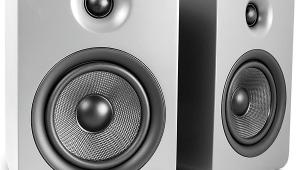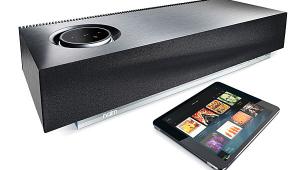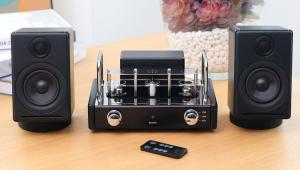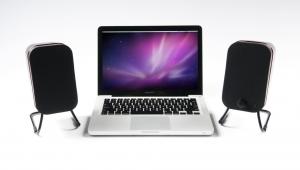I really love this desktop audio set. It's truly great. I often use them to listen to music while playing fnaf 2 which is a great game
Review: Audioengine P4
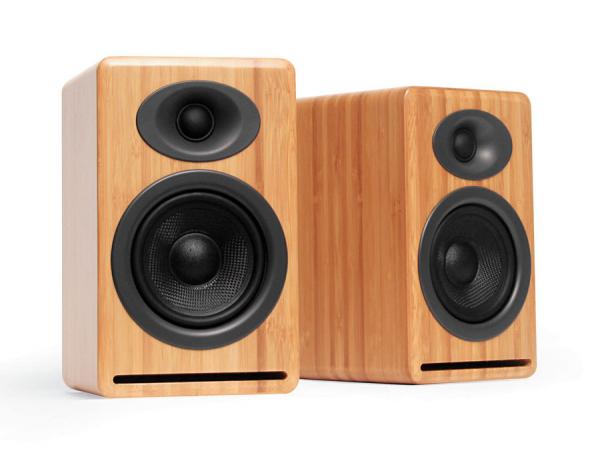
Audioengine is the darling of the desktop audio set, producing mostly small, affordable powered speakers that tend to be used on desks and credenzas. The P4 is the company’s sole passive speaker, with a 0.75-inch silk-dome tweeter, a 4-inch Kevlar-cone woofer, and a front-slotted cabinet. At 9 inches high, it’s the second most compact model in this roundup. The handsome version you see here, crafted from solid bamboo (the world’s most renewable wood) costs an extra $75 per pair.
It quickly became evident that the freestanding setup for this test, with the speakers a couple of feet from the wall and robbed of the bass reinforcement they’d get from a nearby physical boundary, wasn’t the best milieu for the P4, although it’s advertised for use in home theaters and bedroom systems. “This would be good for lighter pop music,” Lauren said, “because it really brings out the vocals, especially female vocals. But it needs more in the bottom end.” While it wasn’t practical for me to do a whole different setup for one speaker, I gave the P4 a spin on a desktop, where it would get a bit of bass reinforcement. There, straddling my laptop computer, the P4 sounded somewhat fuller, but the balance still seemed thin.
The upside of the P4 is its spatiality, which is a pretty tough trick for a desktop speaker to pull off. Greg and I both agreed that the P4’s portrayal of ambience was fairly spectacular, although it seemed somewhat exaggerated compared with some of the other minis. It’s also got a vivid sound, bringing the midrange to the fore and emphasizing voices. But none of us — even Geoff, who’s an enthusiastic user of Audioengine’s powered desktop speakers —would call the sound refined.
The P4 is certainly compact and affordable, both traits that serve it well for desktop use. But we’d prefer Audioengine’s powered systems for our offices, and some of the other speakers tested here for our living rooms.
Measurements
Frequency response of the P4 measures 77 Hz to 20 kHz ±5.9 dB on-axis, ±5.8 dB avg 0°-30°. the curve shows an emphasis on frequencies between 1 and 7 kHz, which are +3 to +5 dB above the rest of the audio band. Measured impedance is 3.6 ohms minimum, 5 ohms average. Sensitivity from 300 Hz to 10 kHz averages 88.2 dB.
- Log in or register to post comments



